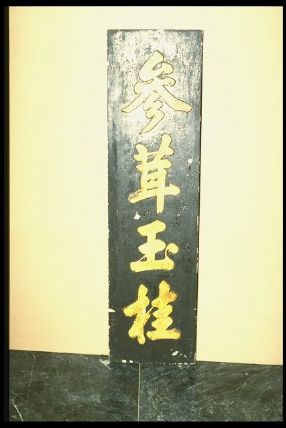As COVID-19 deaths spiked in 2020, Suzanne Firstenberg’s public art installation "In America: How could this happen…"
History Explorer Results (29)
Related Books (8)

Grade Range:
6-12
Resource Type(s):
Reference Materials
Duration:
60 minutes
Date Posted:
1/2/2022
Monetary objects are powerful sources for exploring the past. The Value of Money connects American history to global histories of exchange, cultural interaction and expression, political change, and innovation through objects from the Smithsonian Institution’s National Numismatic Collection.
T

Grade Range:
6-12
Resource Type(s):
Reviewed Websites, Reference Materials
Duration:
60 minutes
Date Posted:
3/11/2022
Monetary objects are powerful sources for exploring the past. The Value of Money connects American history to global histories of exchange, cultural interaction and expression, political change, and innovation through objects from the Smithsonian Institution’s National Numismatic Collection.
T

Grade Range:
5-8
Resource Type(s):
Interactives & Media, Worksheets
Duration:
13 minutes
Date Posted:
11/22/2010
In this episode of the History Explorer podcast series, numismatics curator Karen Lee discusses the history and meaning of the dollar, including unusual items that have been used to represent the dollar in the U.S., and discusses the value of studying money. The teacher guide incl

Grade Range:
K-12
Resource Type(s):
Artifacts, Primary Sources
Date Posted:
5/6/2010
This sign was purchased by a North Beach second-hand shop from a proprietor in the neighboring Chinatown district of San Francisco. It is said to date from between 1890 and 1910. If that is so, the sign’s survival is quite miraculous: The 1906 earthquake in April of that year caused much damage

Grade Range:
5-12
Resource Type(s):
Artifacts, Primary Sources
Date Posted:
6/10/2009
By the late 19th century, the United States had established itself as a world leader in the area of civil engineering. Perhaps no project better symbolized America's technical prowess than the awe-inspiring Brooklyn Bridge, which connected the nation's largest and third largest cities—New York

Grade Range:
K-12
Resource Type(s):
Artifacts
Date Posted:
4/16/2018
This is one of the first models of Liberty cast in the United States. Often described as the American Committee Model, this statuette was produced in the tens of thousands. It was sold to subscribers to finance the construction of a pedestal for the full-size statue in New York Harbor.

Grade Range:
K-12
Resource Type(s):
Artifacts, Primary Sources
Date Posted:
11/5/2008
Once a new national government had been established under a new Constitution, attention naturally turned to ways of proclaiming national identity. A new, national coinage was one way of doing so, especially if it featured patriotic new images, rather than the endless sequence of crowned monarchs

Grade Range:
K-12
Resource Type(s):
Artifacts, Primary Sources
Date Posted:
11/6/2008
Before the famous California gold rush, several important strikes were made in the East: in North Carolina, South Carolina, and Georgia. The earliest took place in Mecklenburg County, N.C., in 1799, where a nugget weighing several pounds was discovered. Its finder used it as a doorstop until some

Grade Range:
8-12
Resource Type(s):
Reference Materials
Date Posted:
8/12/2021
“They had just arrived in a foreign country and the small girl’s mother was sent away. Ernest and Mimi Hausner fled their home in Vienna in 1938, when little Evelyn was just a toddler. Nazi Germany had annexed Austria, putting the lives of Jews like the Hausners at risk. They made it to England

Grade Range:
5-12
Resource Type(s):
Artifacts, Primary Sources
Date Posted:
6/10/2009
Diner's Club was one of the earliest issuers of credit cards beginning in 1950. The convenience and security they came to represent transformed payment methods and later blossomed into one of the primary mechanisms for purchasing goods and services for customers. They also became a device for tra












